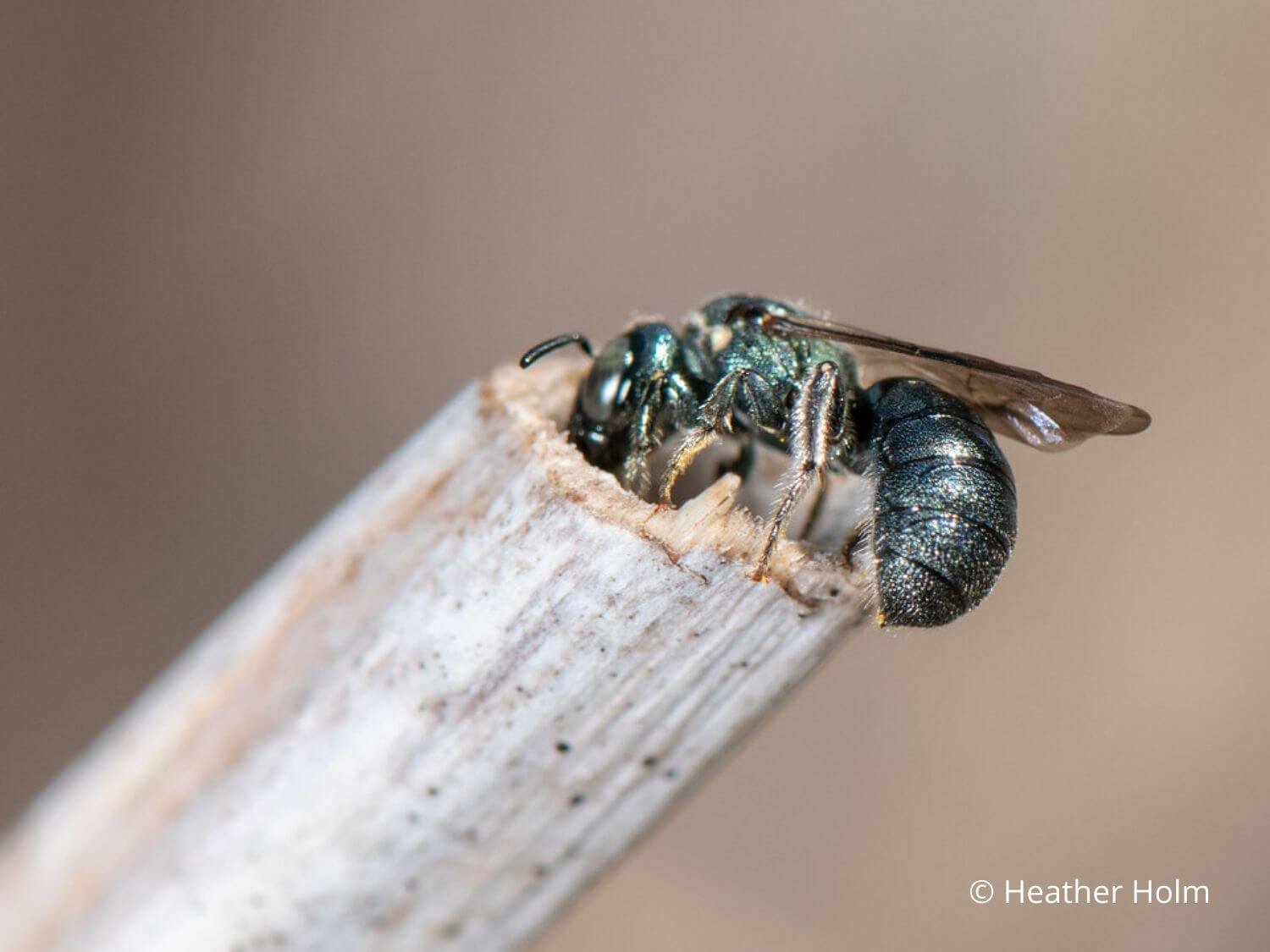
Pollinator Gardening Principles
Photo: Syrphid fly on blue-eyed grass by Mark Robinson
A full-fledged pollinator habitat has many elements—below are the elements we've deemed integral to each habitat and why.
-

Native Plants
Nearly 90 percent of all flowering plants require the help of a pollinator to reproduce, but not just any pollinator. Native plants are species that existed here prior to European colonization, co-evolving with the animals that pollinate them. Over thousands, if not millions of years, plants and pollinators have adapted to one another chemically, physically, and phenologically. By using locally native plant species, we are creating diverse habitats that native pollinators are most likely to thrive in.
-

Nectar & Pollen Sources
Nectar is the primary energy source for the vast majority of adult pollinators and is therefore one of the most significant elements of pollinator habitat. Likewise, pollen sources provide necessary protein for developing and adult bees. For habitat to effectively support pollinators throughout the year, there must be nectar and pollen available in all parts of the growing season (March - October).
-

Trees/Shrubs/Vines
Trees are meadows in the sky for pollinators, and shrubs add interesting garden structure throughout the year. In addition to providing nectar and/or pollen, woody plants, whether thriving or declining, can also offer crucial overwintering or nesting sites. Because of their mass, they are vital larval host plants for butterfly and moth caterpillars, which also serve as baby food for 96% of terrestrial birds.
-

Larval Hosts
Many Lepidoptera (butterflies and moths) species depend on specific native plants as food sources for their offspring. Likewise, about a quarter of all bee species rely on certain plant families or species to supply pollen for their growing larvae. Plants that act as hosts for these eggs and subsequent caterpillars (larvae), or provide pollen for bee larvae, are known as host plants. These plants can fulfill requirements in other categories as well.
-

Shelter
Small spaces of nearly bare, unmulched earth; dead tree snags; hollow stems; leaves left where they fell under trees; and patches of native bunch grasses can provide a place for many pollinators to nest and overwinter.
NOTE: While bee hotels can be quite effective when employed and maintained properly, they also can attract parasites and harbor infectious disease when not maintained properly. Due to these potential downsides, they alone do not constitute viable shelter for the Certified Pollinator Habitat program.
-

Leave the Leaves
Many other pollinators and other invertebrates overwinter in the leaves under trees and shrubs. In fact, 94% of moths pupate in or under leaf litter during winter!
Instead of mowing and bagging them up, leave them in place for winter shelter. If you keep a lawn, you could move the leaves from it into designated areas, like a perennial bed. You can also save your stems for solitary bees, trimming in spring to leave 8-24” of stalk for potential nest cavities.
-

Avoid Pesticide Use
Pesticide use is one of the leading causes of pollinator decline. “Pesticide” is an umbrella term that includes herbicides, insecticides and fungicides. Round-Up, for example, is a pesticide. A pollinator garden should not be exposed to these types of chemicals. By using a diversity of native plants, nature is better able to find balance between predator and prey, reducing the need for pest management.
-

Limit Exterior Lighting
Artificial outdoor lighting can be very harmful to many animals, especially moths who are incapable of resisting it. Even plants’ normal growth cycles are disrupted by artificial light—that’s why we have learned to force plants to grow and fruit abnormally quickly with grow lights. If you need lighting outdoors, use Dark Sky Approved lighting to mitigate light pollution.
-

Remove Invasive Species
Exotic invasive species can outcompete and displace native plants and are a huge threat to our natural ecosystem. Guarding your habitat against invasives promotes its longevity as a healthy refuge for pollinators and reduces the spread of these noxious species.
If you’re not sure where to start, the NC Native Plant Society has a ranked list of Invasive, Non-Native Species.

